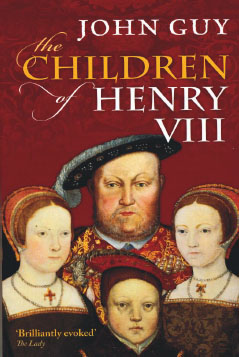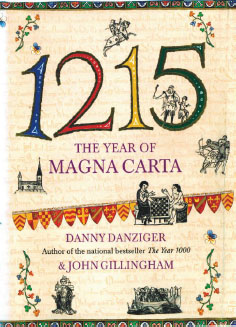

DVD
Grantchester, starring James Norton and Robson Green, 2-disc boxed set, PBS Distribution, approx. 360 minutes, $34.99
Murder and the Vicar in an English Village: What’s Not to Love?
IT’S THE PERFECT SETTING for an English murder mystery: a quiet Cambridgeshire village in the early 1950s. Our hero is the young village vicar in Grantchester, Rev. Sidney Chambers. Coming out of the war, the handsome, and single, village priest is rather worldlier than our traditional image of the rural vicar—liking a tipple and hot jazz, and looking for love.
This is a charming Masterpiece Mystery series, with very human characters we can care about. It makes a great addition to the video genre for those of us who love the English murder mystery tradition. Think of it as a costume drama of yet living memory, beautifully cast and acted, and produced with the finesse we’ve come to expect from Masterpiece.
The author of The Grantchester Mysteries and creator of Reverend Sidney Chambers is writer James Runcie, whose late father, Robert Runcie, was the Archbishop of Canterbury (1980-1991). In fact, Runcie styled young Sidney after his father, who had been a tank commander during World War II before studying for ordination and becoming a young curate.
Clergy do, of course, make great detectives. After all, they are more attuned to the intricacies of the human soul than most of us profess to be. Dorothy Sayers loveable Father Brown reminded us of that again and again. And people confide things to a parish pastor that they would never tell, say, the police.
In Sidney Chambers’ first foray into sleuthing, he strikes up with police inspector Geordie Keating. Their story is one of a developing friendship, bonded over war service, love of the pub and backgammon. Together they tackle a series of challenging cases with the usual suspects: jealousy, money, class conflict and passion.
In classical terms, the murder mystery is comedy, and that’s why we like it. The murder is solved; justice is served; good has triumphed over evil. It’s the nature of comedy, not tragedy: everything turns out all right in the end. That is why we find them, ironically enough, comforting. In that sense, the triumphant detective, be it Poirot or Barnaby, Father Brown or Rev. Sidney, champions the same message as every Christian cleric: In the end, the good will win.
[caption id="" align="aligncenter" width="761"]

© LOVELY DAY (GRANTCHESTER) LTD. 2014
BOOK
The Children of Henry VIII by John Guy, Oxford University Press, New York, 448 pages, softcover, $16.95.
WITH ALL THE ATTENTION gathering around the production of Wolf Hall based upon the novels of Hilary Mantel, Tudor is hot right now. Her tale of the rise of the unscrupulous Thomas Cromwell in the service of King Henry VIII played across the 1540s upheaval of church and state. Cromwell’s intrigues had a material impact on the lives of each of King Henry’s four children.

Born each to a different mother, the king’s three legitimate children, Mary, Elizabeth and Edward, share his affection with illegitimate, but always recognized, Henry Fitzroy, Duke of Richmond. They differed greatly in personality and character, with interrelationships marked by jealousy, sibling rivalry and mutual distrust, as events over which they had no control steered their lives and changed their relative status. Here is their story.
Prolific Cambridge historian John Guy unpacks the lives of each of Henry’s heirs as children, and emphasizes their relationships as siblings. The results, often lost in the “bigger” histories of the Tudors and their times, offers wonderful insight into how their childhood created the monarchs that three of them became.
Like all good histories, The Children of Henry VIII is a great story. Guy keeps the narrative flowing, with just the right amount of illuminating anecdote and observation. For anyone with an interest in the colorful 16th-century Tudors, this is a spell-binding, illuminating read that goes almost too quickly.
BOOK
1215: The Year of Magna Carta by Danny Danziger and John Gillingham, Touchstone Books, New York, 336 pages, hardcover, $16.
AMONG THIS YEAR’S historical highlights, no anniversary light shines brighter than the commemoration of 800 years since King John put his seal on Magna Carta on the meadow next to River Thames at Runnymede. It is a truth universally acknowledged that the said charter became a keystone in the development of law and the recognition of human rights over the centuries. But what was the English world like in 1215, and what did the Magna Carta mean in the context of its time?
British Heritage’s view of history is that any text—be it the poems of Tennyson, the plays of Shakespeare or Magna Carta—can be apprehended and appreciated fully only in understanding its historical context and the world view of their age.
It is not often that British Heritage highlights books that are not hot-off-the-press. 1215: The Year of Magna Carta has been out a few years, and is available at Amazon or Barnes & Noble. Here is the enticing, fascinating story of what England and English life was about in the time of King John, the early years of the 13th century. This is learning history at its most readable and entertaining.

Drawing on clauses from Magna Carta, Danziger and Gillingham unpack the demographics of town and countryside, the 13th-century landscape, the Church, family and home life, King John’s own family and the power elite, hunting, tournaments, warfare and more. Each account serves to explain the reason for the various clauses in the charter, and the impact that Magna Carta had on that aspect of medieval life.
In its time, Magna Carta was something of a bust. King John and the Pope both renounced it as soon as they could, and a messy civil war followed in its wake. The charter and the principals of its defining clauses, however, would not disappear. One after another, the Plantagenet kings that followed John in the 13th and 14th centuries were compelled to recognize the rights it spelled out.
This isn’t a long read, but the book provides an efficient gateway to actually understanding what Magna Carta says and why, and how it took the first footstep on the road to modern government in the English-speaking world. Much fun.





Comments